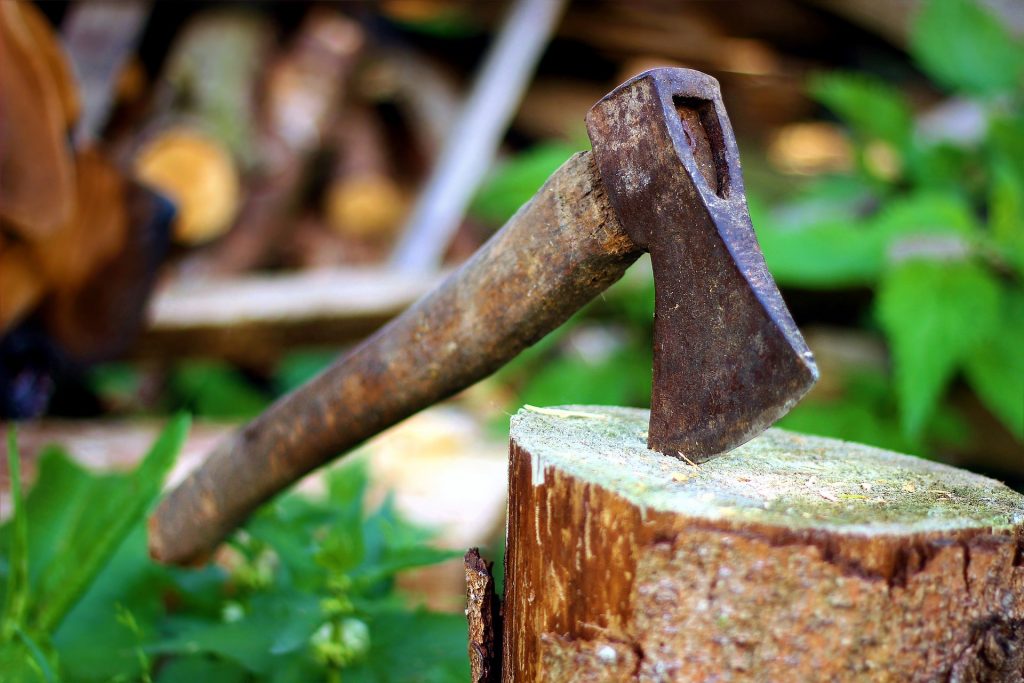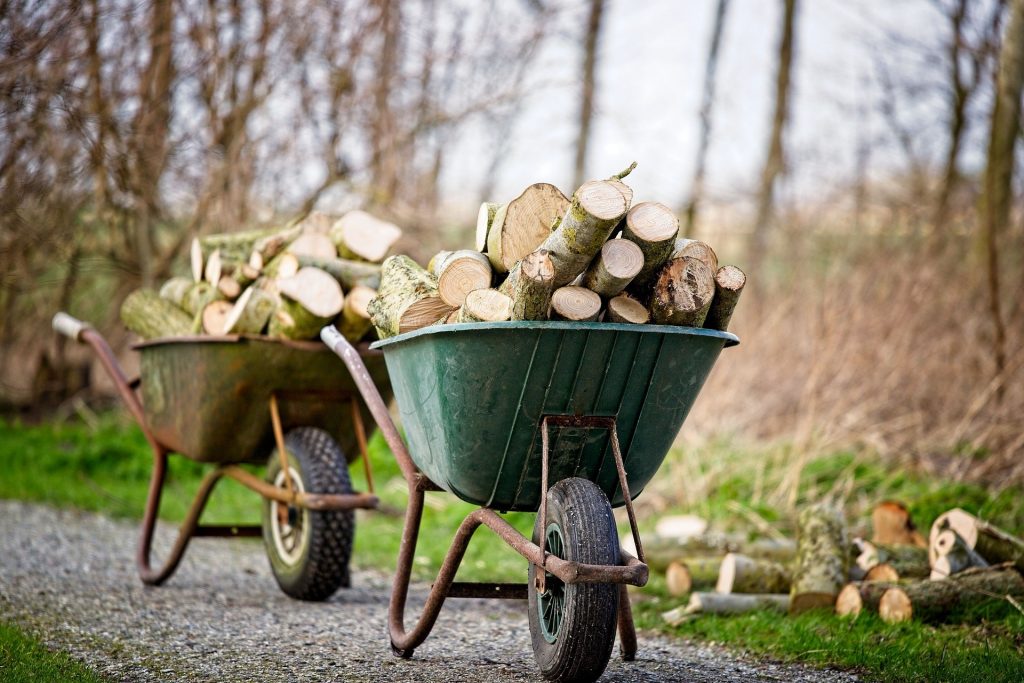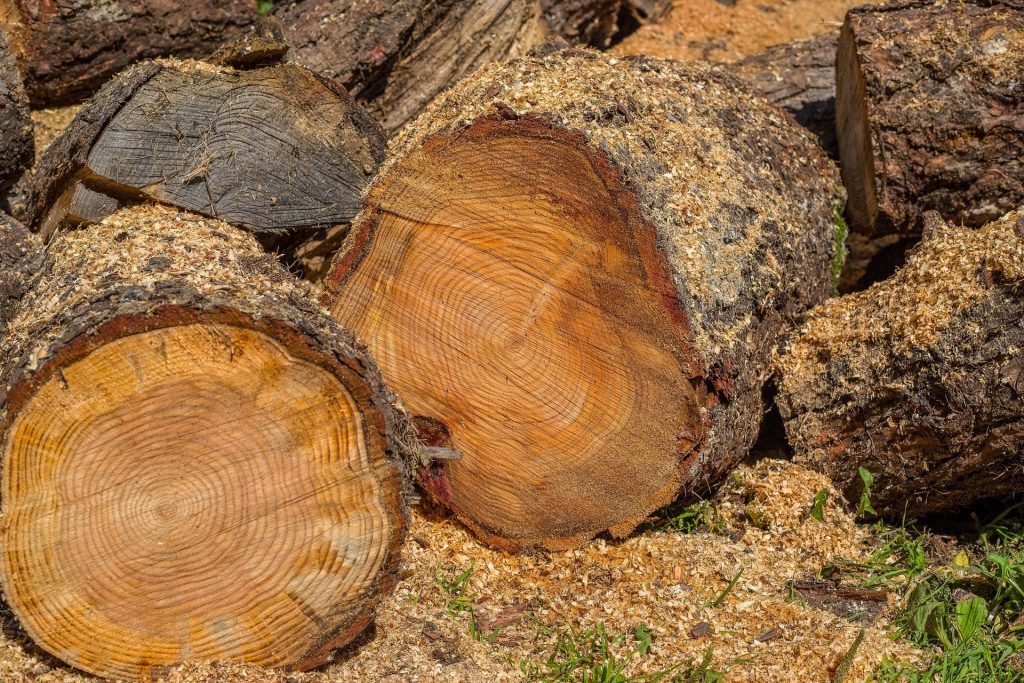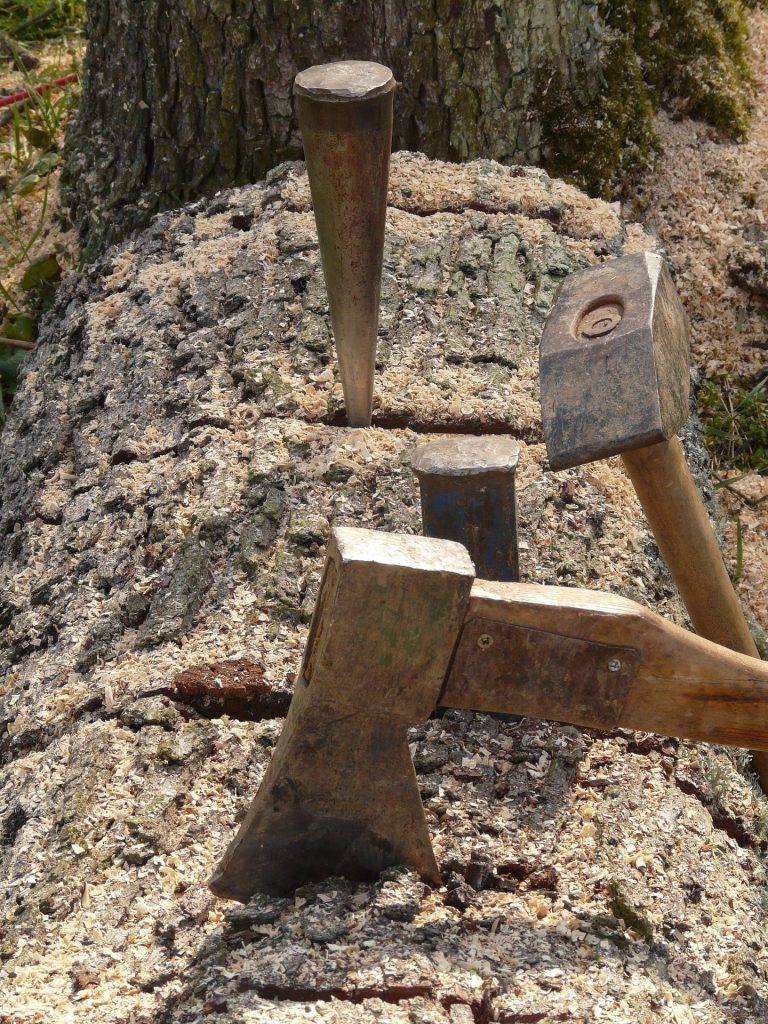Splitting logs and firewood is a task that is essential for those who heat their homes with wood burning stoves or fireplaces. Not only does splitting firewood make it easier to stack and store, but it also helps the wood to dry faster, making it burn more efficiently. In this guide, we will cover the basics of firewood splitting, including the tools you will need, safety precautions, and techniques for splitting different types of wood.
Editor’s note: This article was originally published on 15th January 2023. A number of enhancements and tweaks have been made to this article to improve readability and flow.
Firewood splitting tools
Bring out your inner lumberjack with the following tools are ideal for splitting logs and firewood:
- Axe or maul - these are the two primary firewood splitting An axe has a thinner blade and is used for smaller logs, while a maul has a wider blade and is better for larger logs
- Chainsaw – not always necessary but can help to speed up the process
- Splitting wedge - a splitting wedge is a triangular piece of metal that is used to split wood along the grain. Splitting wedges can be driven into the wood with a hammer or maul, and it helps to create a larger crack in the wood
- Gloves - wearing gloves can protect your hands from blisters and splinters
- Safety goggles - protect your eyes from flying wood chips
Safety precautions when splitting logs and firewood
When splitting firewood, it is important to take safety precautions to prevent injury. These include wearing protective gear such as eye protection and gloves, using a sharp and well-maintained axe or maul, and ensuring that the area where you are splitting the wood is clear of any potential hazards. Additionally, it is important to use proper techniques when wood splitting, such as keeping your fingers and other body parts away from the blade and being aware of the direction the wood will split in.

Safety is vital when cutting wood, which is why it makes sense to use the right equipment
Therefore, when splitting logs and firewood you should:
- Always wear appropriate safety gear such as gloves, safety goggles, and closed-toe shoes
- Make sure that the area where you are splitting wood is clear of debris, and that there is nothing flammable nearby
- Never split wood on a windy day, as wood flying and flying wood chips can cause injury
- Never split wood on a slope, as it can be dangerous and unstable
What is the best way to split logs?
Splitting firewood is the process of cutting a log into smaller pieces, typically for use as fuel in a fireplace or wood-burning stove. There are several methods for splitting logs, and the most appropriate method will depend on the type of wood you are working with, as well as your own preferences and skill level.
Manual splitting - using a splitting axe or maul is the traditional method of splitting firewood. A sharp tool is used to strike the log, driving it apart into smaller pieces. This method requires physical strength and can be time-consuming

Firewood has to be split correctly to ensure it burns efficiently and effectively
Mechanical splitting - this method uses a machine such as a log splitter, which uses a hydraulic ram to force the log apart. This method is faster and requires less physical effort than manual splitting, but it can be expensive to purchase or rent a log splitter
Chain saw - a chain saw is a power tool with a chain with cutting teeth on it that rotates around a guide bar, it's used for cutting trees, but can also be used for cutting firewood
Electric log splitter – this is a quiet, easy, and low-effort way to split logs. An electric log splitter is rather slow and has limited capacity
It's important to wear protective gear such as eye protection and gloves when splitting firewood, and to use proper technique to prevent injury. Additionally, it's important to store your firewood properly, stacking it off the ground and covering it to dry out before use, so you have a steady supply. Also, be sure to prevent rain by covering logs with a protective tarpaulin.
Splitting logs technique
Use the following techniques to split logs:
- Split small logs by using an axe to make a notch at the end of the log. Place the notch on a block of wood or log and strike the back of the axe with a mallet to drive it through the log until the wood splits
- For larger logs, use a maul and splitting Place the steel wedge in the end of the log and strike it with the maul to drive it into the wood. Then, use the maul to split the log along the grain
- For knotty or twisted logs, use a chainsaw to make several cuts into the log, and then split it with an axe or maul
Where should you split firewood?
The best place to split firewood is on a level, solid surface that is clear of debris and obstacles. Splitting logs and firewood can be dangerous, so it's important to have a safe work area.

You should make sure that you split firewood in the right place
Here are a few options for where to split logs and firewood:
- Concrete or asphalt driveway or patio - these surfaces provide a level and stable surface for splitting wood, and they are easy to clean up
- Gravel or dirt area - if you don't have a concrete or asphalt surface, a gravel or dirt area can also work well. Just be sure to clear the area of debris and rocks that could damage your splitting tools
- Splitting stump - you can buy or make a splitting stump, which is a large piece of wood that has been cut flat on one side and left rough on the other. The rough side provides a surface to split the wood against
- Chopping block – this is a section of a tree trunk or a thick wooden block, but it is often used for different types of cutting, such as chopping or splitting smaller logs and pieces of wood. A short chopping block is used for tasks that require less force than log splitting
- Firewood splitting stands - you can also buy or make a firewood splitting stand, which is a metal or wooden frame that holds the log in place for splitting
Always take care of your safety when working with firewood, use appropriate equipment, such as gloves, goggles (or safety glasses), and hearing protection. It's important to avoid splitting firewood on pavement or other hard surfaces that can damage your firewood splitting tools or cause sparks that could start a fire.
Types of wood to consider
Hardwoods, such as oak and hickory, are denser and burn longer than softwoods, such as pine and spruce. Hardwoods are also more difficult to split, but they produce less creosote build-up in chimneys.
You can also opt to use softwoods. These are easier to split and dry faster than hardwoods, but they burn quickly and produce more creosote build-up in chimneys. If you are looking for wood to generate heat over a long period, then this is not the best wood to use.
Green wood is wood that has been recently cut down, and it is much harder to split than dry wood (seasoned wood or kiln dried wood). It is also important to note that it doesn’t burn as well as seasoned wood or kiln dried wood.
Stacking your wood after firewood splitting
Once you have finished carrying out firewood splitting, you will need to consider storing it.
Stacking and storing firewood properly is important to keep it dry and free of pests. Here are some basic steps to follow:
- Choose a location that is level and well-drained. Avoid low-lying areas where water might collect.
- Create a base for the stack by placing a few large logs or pallets on the ground.
- Begin stacking the firewood, starting with the largest pieces on the bottom and working your way up. Alternate the direction of the logs to create a stable stack.
- As you stack, use a level to ensure that the stack is even.
- Cover the top of the stack with a tarp to keep it dry. Make sure the tarp extends down the sides to protect the wood from moisture.
- Keep the stack at least 6 inches off the ground to prevent rot.
- Stack enough wood to last for one or two seasons, any more than that may cause the wood to rot before it is used.
- Keep the stack away from buildings, walls, and other combustible materials.
By following these steps, you can ensure that your firewood is dry and ready to burn when you need it.

Using the right tools will allow you to split the wood correctly and safely
Useful tips for wood splitting
Wood splitting can be hard work but there are some things that you can do to make life easier for yourself. Remember, that you don’t have to split all of the wood in one go, so take your time and turn it into a process that is simple and as easy as possible. However, with these useful tips, you will soon find the best way to split logs for you:
- Use the right firewood splitting tools - a sharp splitting maul or axe is essential for splitting wood. Keep your firewood splitting tools sharp and in good condition to make the job easier
- Start with small pieces - start with smaller pieces of wood and work your way up to larger logs. This will help you build up your strength and get a feel for the process
- Use a wedge - a splitting wedge can make the job of splitting wood much easier. Place the wedge in the crack of the log and hit it with the maul to split the log
- Stand in the right position - stand with your feet shoulder-width apart and your knees slightly bent. This will give you better balance and control when splitting wood
- Use gravity to your advantage - when possible, stand the log on end and split it in a vertical line. This will make it easier to split than if it were lying on its side
- Surroundings awareness - always be aware of your surroundings and the position of your body and be aware of the direction the wood will split, and the people or objects around you
- Take breaks - splitting wood can be hard work, so take breaks when you need to. It's better to take a break and come back refreshed than to push yourself too hard and risk injury
By following these tips, you can make the task of splitting firewood easier and safer.
Finally
In conclusion, splitting firewood is an essential task for those who heat their homes with wood burning stoves or fireplaces. By using the right firewood splitting tools, taking safety precautions, and using the correct techniques, you can split firewood quickly and easily. It is also important to understand the differences between hardwoods and softwoods, and the effects of green wood on the quality of the fire. With this information, you can now go out and get started on mastering the best way to split logs.
Contact Cozilogs today
If you have any questions or comments about “The Ultimate Guide to Firewood Splitting”, please feel free to contact us at sales@cozilogs.co.uk. We look forward to hearing from you! Why not buy Cozilogs’ pre-cut logs and save time, expense, and effort? Do not hesitate to contact us via our web contact form or by calling us at (01905) 954 736.

